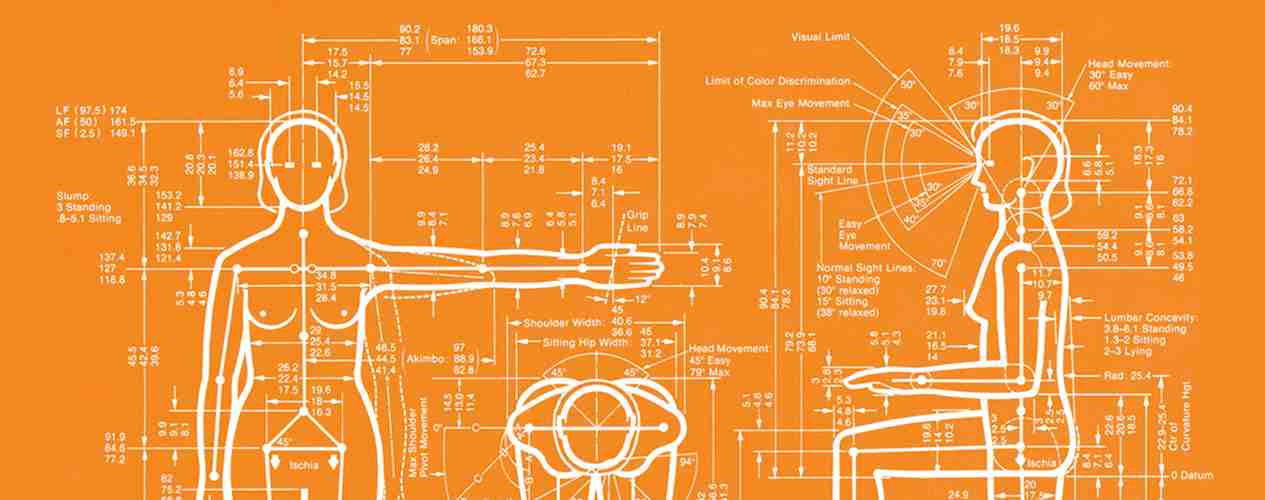Ergonomics
The term ergonomics is derived from the words “Ergo” and “nomos” and roughly translates to “laws of the workplace.” Ergonomics is essentially a workplace science applied to optimize the working conditions for the employees and applied in designing products to suit the users better.
The concept is believed to have evolved from the ancient Greeks, but it gained significant recognition in the industrial age with the advent of factories and machines. To ensure employee safety and reduce errors and failures in manufacturing, designers came up with systems tailored for smooth functionality.
And over time, designers paid attention to the quality of the products, focusing on avoiding production losses by optimizing workplace design. Products such as furniture and household appliances were designed with better physical fit to the users, with the help of Ergonomic principles.
Ergonomics has become synonymous with the term human factors in the modern days, and this science has taken a prominent place in the design departments of modern businesses.
Ergonomics and Anthropometry

The science heavily relies upon “Anthropometry,” which deals with measuring the human body and its parts. The study of human body parts, their dimensions, and their strength and range of movements help to design products that naturally become an extension of the human body.
Besides the convenience in usage, Ergonomics also improves the chances of avoiding injuries and health hazards associated with tools. For example, body posture is one of the significant areas of focus. The product’s dimensions and weight should be decided only after analyzing the possible postures that the user would be in when using the product. A product not optimized for body posture would create physical stress and drain energy faster.
Assume you are designing a door. How tall would you make it? Tall enough for the tallest person to enter. How do you know who is the tallest? And if there are just a dozen people that tall, and when you don’t even know if this tiny population would happen to use that door, would it be wise to make the door that tall?
The general idea is that neither extreme outliers nor the average should determine the numbers. Proper research has to be conducted to study data regarding the heights and weights of people, and standards have to be arrived at to decide the optimal size for the door. However, reaching the optimal measurements would require precise calculations.
Another example could be a drilling machine. The machine has to have a fitting handle, and the gripping strength required should match the average human capacity. The grip should not be slippery. All these requirements could be fulfilled only after carefully studying data on hand measurements and fist strength.
Understandability

The user and the product physically fitting with each other is one aspect of ergonomics, and the other equally important aspect is understandability. Any part of the product or system that has been designed should make sense intuitively to the targeted set of users.
For instance, in a washing machine, a rinse button should indicate that it is the rinse button. And it should be located where the other wash modes are present. And the handle that opens the machine’s door should be noticeable and convenient to hold. In essence, all the functions in the device must make sense to a user who generally knows how to do their laundry. They must be able to locate these options quickly and should be able to work with the product without much of an intellectual effort.
Ergonomics and UI

Ergonomics is still relevant in the UI design era, where, although the physical interaction is mainly limited to the fingers, the utilities of these devices are crucial, and any shortcoming in the design could cost users a lot of stress and frustration.
After immense study and research over how users would hold the device and how their hands would access it, the dimensions of the display in gadgets are arrived at. Even while designing applications, designers pay attention to the most accessible areas of the screen and position their content and buttons accordingly. Whether the user works with their one hand or two hands, and if a single hand is used, which hand is used the most, and other relevant data are crucial to designing digital products.
In conclusion, Ergonomics will stay relevant for as long as human beings exist and can only evolve further and become more relevant, especially for those invested in design.
